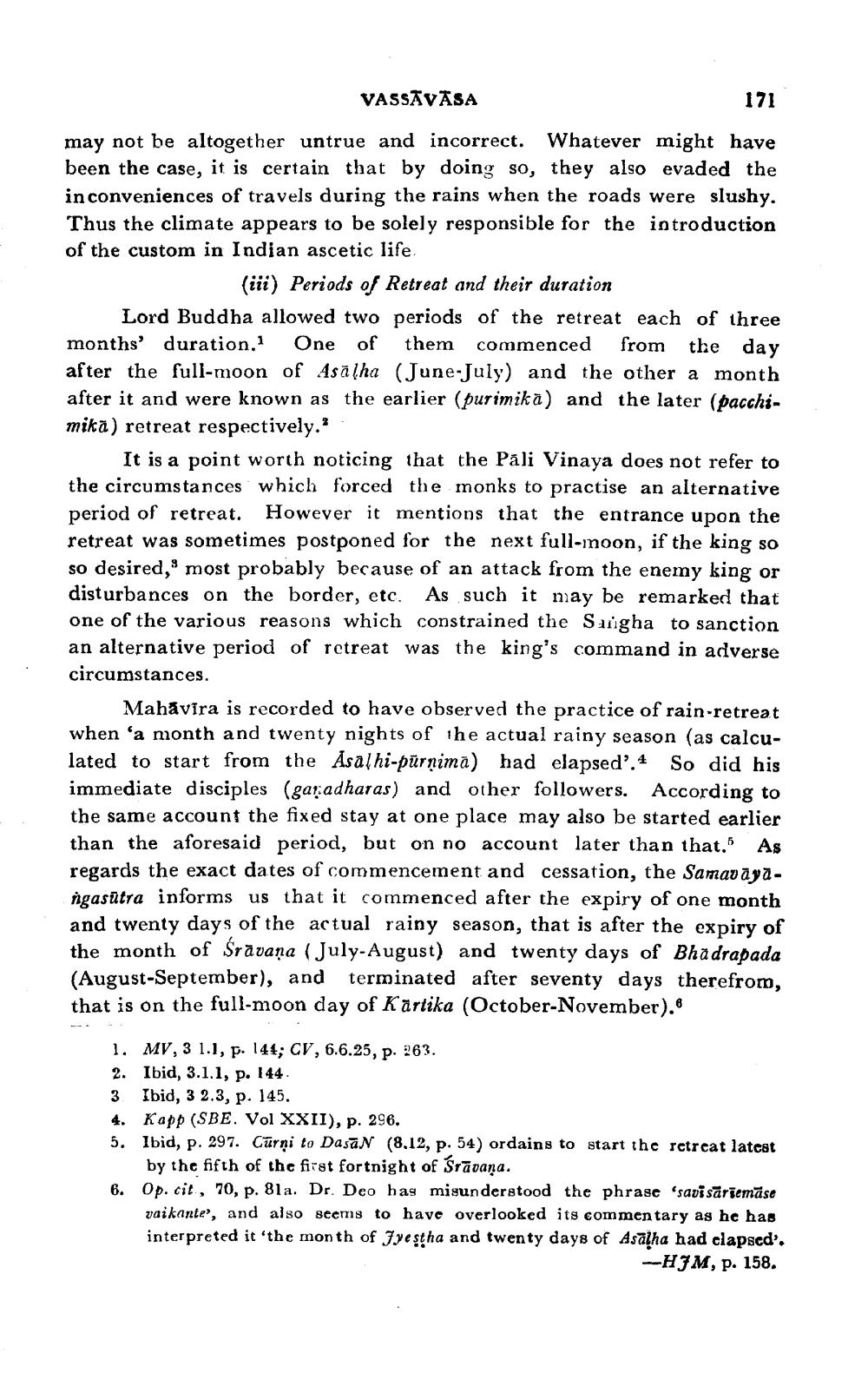________________
VASSĀVĀSA
171
may not be altogether untrue and incorrect. Whatever might have been the case, it is certain that by doing so, they also evaded the inconveniences of travels during the rains when the roads were slushy. Thus the climate appears to be solely responsible for the introduction of the custom in Indian ascetic life.
(iii) Periods of Retreat and their duration Lord Buddha allowed two periods of the retreat each of three months' duration. One of them commenced from the day after the full-moon of Asälha (June-July) and the other a month after it and were known as the earlier (purimika) and the later (pacchimikā) retreat respectively.'
It is a point worth noticing that the Pali Vinaya does not refer to the circumstances which forced the monks to practise an alternative period of retreat. However it mentions that the entrance upon the retreat was sometimes postponed for the next full-noon, if the king so so desired,' most probably because of an attack from the enemy king or disturbances on the border, etc. As such it may be remarked that one of the various reasons which constrained the Sangha to sanction an alternative period of retreat was the king's command in adverse circumstances.
Mahavira is recorded to have observed the practice of rain-retreat when 'a month and twenty nights of the actual rainy season (as calculated to start from the Asalhi-purnima) had elapsed'. 4 So did his immediate disciples (garadharas) and other followers. According to the same account the fixed stay at one place may also be started earlier than the aforesaid period, but on no account later than that. As regards the exact dates of commencement and cessation, the Samavaya. ngasūtra informs us that it commenced after the expiry of one month and twenty days of the actual rainy season, that is after the expiry of the month of Srāvana (July-August) and twenty days of Bhadrapada
eptember), and terminated after seventy days therefrom, that is on the full-moon day of Kārtika (October-November).
1. MV, 3 1.1, p. 144; CV, 6.6.25, p. 263. 2. Ibid, 3.1.1, p. 144 3 Ibid, 3 2.3, p. 145. 4. Kapp (SBE. Vol XXII), p. 296. 5. Ibid, p. 297. Cūrni to Dasās (8.12, p. 54) ordains to start the retreat latest
by the fifth of the first fortnight of Srāvana. 6. Op. cit, 70, p. 81a. Dr. Deo has misunderstood the phrase "savi sāriemāse
vaikante", and also seems to have overlooked its commentary as he has interpreted it “the month of Fyestha and twenty days of Asālha had clapsed'.
--HJM, p. 158.




